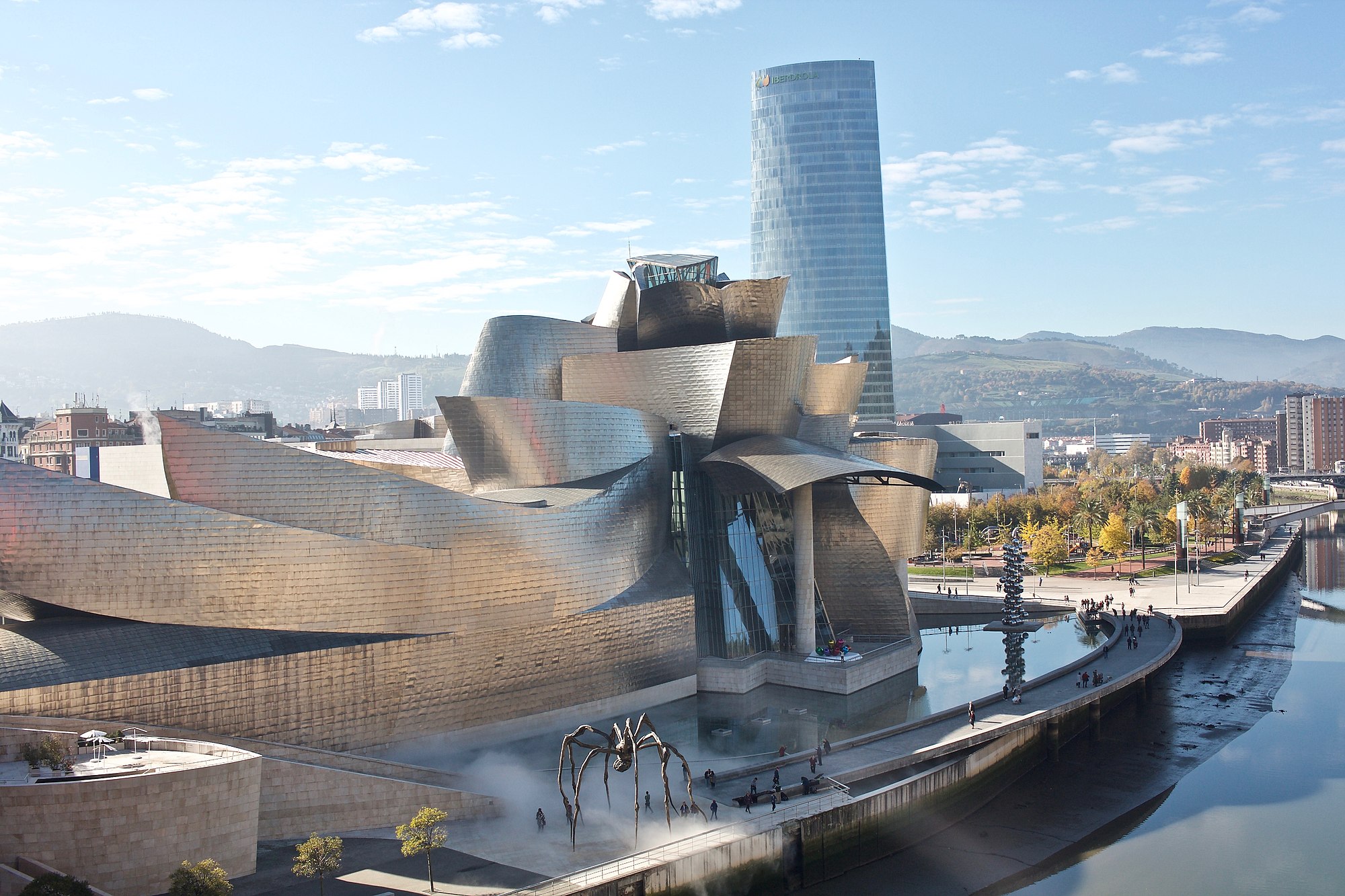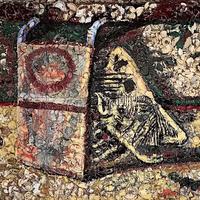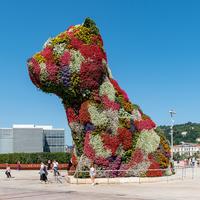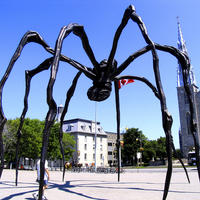More about Guggenheim Museum Bilbao
Works at Guggenheim Museum Bilbao

Contributor
With architectural masterpieces and 40 Michelin star restaurants it’s no surprise that the city of Bilbao, Spain is a popular tourist destination.
But as recently as the 1990s, Bilbao was a failing industrial city, with abandoned warehouses and factories lining the polluted river. To understand Bilbao’s turnaround is to understand the Bilbao Effect: the power of Frank Gehry’s Guggenheim museum to attract tourists and reboot the economy.
Situated on the edge of the Nervión river, looking like some type of deformed decapitated fish sits the jewel of Bilbao. This highly instagrammable titanium masterpiece tells a story that has been popularized and replicated around the world. The Bilbao Effect has come to represent the ability of a flashy cultural institution, like Gehry’s Guggenheim, to provoke an influx of tourism and publicity in a city. Although the plan has since been implemented by bold cities willing to invest in architectural masterpieces, the idea’s stronghold is in its namesake city. In the 1960s and 70s, the city emerged as an industrial city that provided jobs for immigrants (kind of like Pittsburgh, but with a Spanish flair). During the 80s the iron and steel industries experienced a crisis and forced the city to come up with a survival plan. With the decision to invest in the Guggenheim, Bilbao changed from a industrial city to a service city, providing attractions to satisfy the appetites of travelers and intellectuals.
When the Guggenheim Bilbao opened its doors in 1997, an article in the New York Times referenced the occasion as, “The Miracle in Bilbao.” The Guggenheim Bilbao marked a change in the mission of museums, to not only serve as a repository for art, but to encompass their own brand. The Guggenheim Bilbao not only solidified Bilbao’s place on the tourist trail; it proved the value of cultural institutions to the city that hosts them. Next on the Guggenheim’s list of conquests? A brand new Gehry-designed museum in Abu Dhabi.
Sources
- Deutsche Welle. "The Museum That Changed a Whole City: Guggenheim Museum Bilbao Turns 20 | DW | 19.10.2017." DW.COM. Accessed April 07, 2018. http://www.dw.com/en/the-museum-that-changed-a-whole-city-guggenheim-mu….
- Hawthorne, Christopher. "Two Decades after Gehry's Guggenheim Bilbao, Where Does Architecture Stand?" Los Angeles Times. Accessed April 07, 2018. http://www.latimes.com/entertainment/arts/la-ca-cm-building-type-guggen…
- "Industrial Bilbao." Bilbao.eus, About Bilbao, History of Bilbao, Bilbao Industrial. Accessed April 07, 2018. http://www.bilbao.eus/cs/Satellite?c=Page&cid=1279141757270&language=en….
- Morris, Jane. "The Guggenheim Bilbao, 20 Years Later: How a Museum Transformed a City-and Why the 'Bilbao Effect' Has Been Impossible to Replicate." Artnet News. October 11, 2017. Accessed April 07, 2018. https://news.artnet.com/art-world/the-bilbao-effec
- Shurvell, Joanne. "Five Reasons To Visit Bilbao, Spain." Forbes. November 17, 2017. Accessed April 07, 2018. https://www.forbes.com/sites/joanneshurvell/2017/11/13/five-reasons-to-….

Contributor
One of architect Frank Gehry's most famous buildings. Crazy, wild architecture that art critics, academic know-it-alls, and the public all seem to love. It's become a tourist attraction.
It houses a great art collection too.
If you enlarge this photo you can see Louise Bourgeois' 33 foot spider standing in front waiting to stomp on crabby tourists.
Featured Content
Here is what Wikipedia says about Guggenheim Museum Bilbao
The Guggenheim Museum Bilbao is a museum of modern and contemporary art designed by Canadian-American architect Frank Gehry, and located in Bilbao, province of Biscay, Spain. The museum was inaugurated on 18 October 1997 by King Juan Carlos I of Spain, with an exhibition of 250 contemporary works of art. Built alongside the Nervion River, which runs through the city of Bilbao to the Cantabrian Sea, it is one of several museums belonging to the Solomon R. Guggenheim Foundation and features permanent and visiting exhibits of works by Spanish and international artists. It is one of the largest museums in Spain.
A work of contemporary architecture, the building has been hailed as a "signal moment in the architectural culture", because it represents "one of those rare moments when critics, academics, and the general public were all completely united about something", according to architectural critic Paul Goldberger. The museum was the building most frequently named as one of the most important works completed since 1980 in the 2010 World Architecture Survey among architecture experts.
Check out the full Wikipedia article about Guggenheim Museum Bilbao














